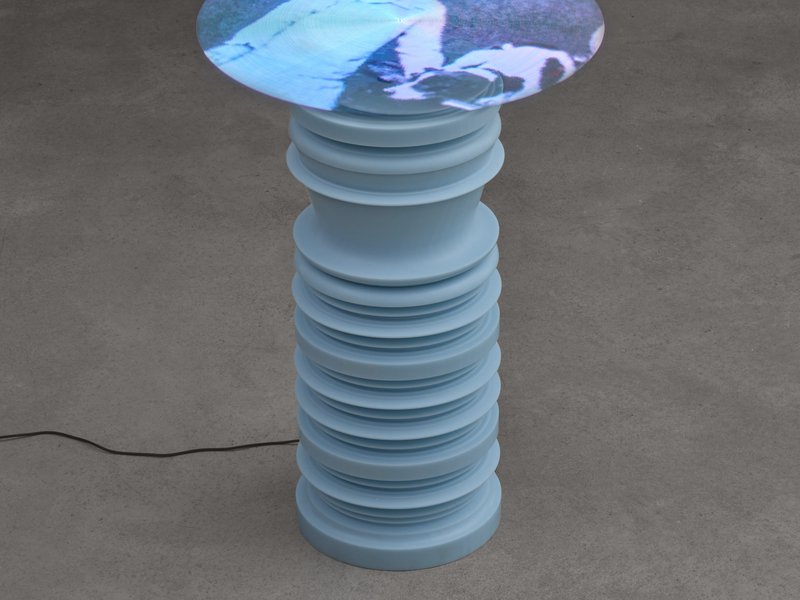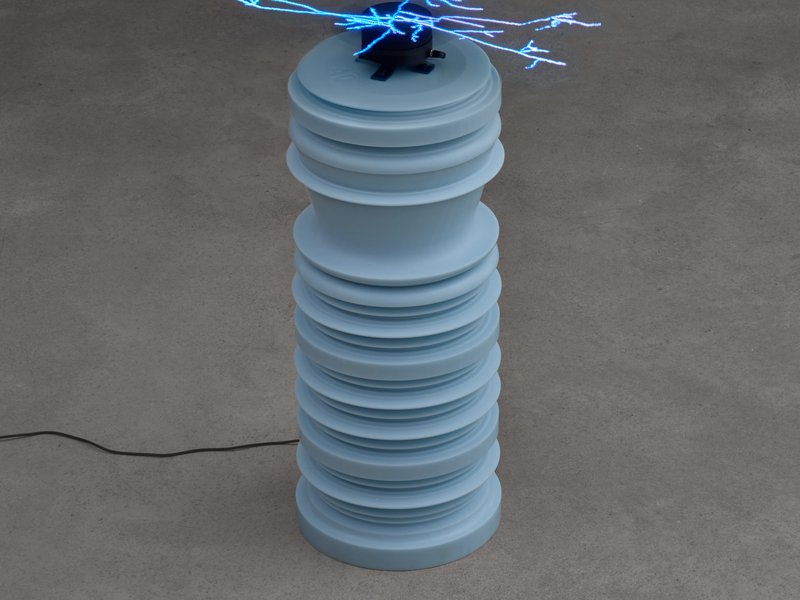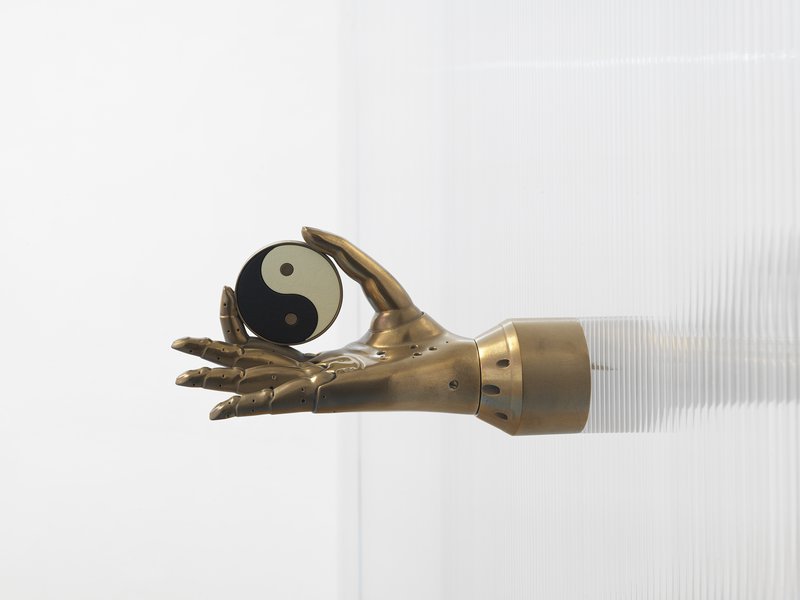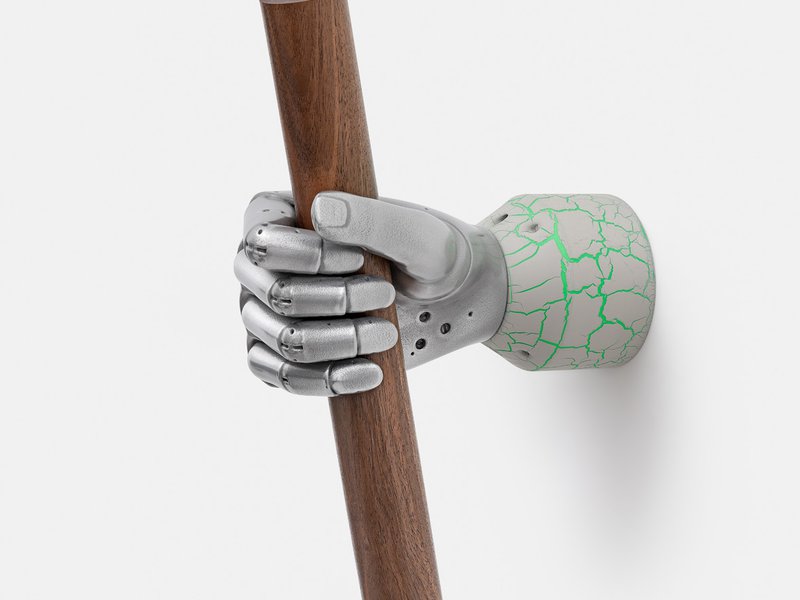Aleksandra Domanović
2021, installation
In their own way Worldometers – named after a website that aggregates live tickers for various real-time statistics, including coronavirus data – give form to things that are difficult to imagine. Hybrid image-objects display the R-value, number of positive cases per 100,000 people and the ICU occupancy rate in Berlin between 30 April and 5 June 2021. Manifesting the fraught encounter between humans and SARS-CoV-2 through spinning, Worldometers show the proximity of life and its absence and act as a kind of capsule from a time defined by the porosity of the boundaries between dream and reality, fact and fiction, statistics and the unconscious.
 open gallery
open gallery
 open gallery
open gallery
 open gallery
open gallery
 open gallery
open gallery
 open gallery
open gallery
2013–2014, laser sintered PA plastic, polyurethane, Soft-Touch & copper finish/bronze finish/Soft-Touch & aluminium finis/Yugoslav chestnut
The ‘Belgrade Hand’, the first functional touch-sensitive controllable prosthesis in the world was invented in 1963 in Yugoslavia by the Serbian scientist Rajko Tomović. Digitally rebuilt as a 3D model and materialized through a process of laser sintering the hand returns to act out various gestures. It is coated with bronze, copper, aluminium and “Soft-Touch” materials, the latter commonly used in car interiors for its seemingly organic, even skin-like surface. The robotic hands in Iskra Delta headquarters point to the history of Yugoslavian technological innovation and the future it anticipated, as well as to other utopian ideas of the time, and intersect them with the figure of the cyborg and early cyberfeminist attempts to imagine an alliance between technology and women. The Relay Runner carrying a baton made of Yugoslav chestnut, Sueño de una Tarde holding a yin-yang symbol, a hand with a cigarette (a torch of freedom), and one gently supporting a tiny bird – they act both as a nostalgic reminder of past promises and hopes and as their technologically engendered heirs, harbingers of a possible different, not-only-human future in times of social, political and ecological uncertainty.
 open gallery
open gallery
 open gallery
open gallery
 open gallery
open gallery
 open gallery
open gallery
Aleksandra Domanović (born in Novi Sad, 1981) studied at the Faculty of Architecture in Ljubljana and at the University of Applied Arts in Vienna. Her work takes a probing look at a wide range of phenomena of contemporary society, among them cultural techniques, scientific and technological developments, history and culture, popular culture and the shaping of national and cultural identity. Domanović’s works are precisely conceived narratives, visualized through the use of iconic images or illustrations taken from other contexts. She has had major solo exhibitions at Galleria d’Arte Moderna, Milan (2019); MoCA Cleveland (2018); Bundeskunsthalle, Bonn (2017); Henry Moore Institute, Leeds (2017); Museum Boijmans Van Beuningen, Rotterdam (2016); Oakville Galleries, Canada (2016); the Gallery of Modern Art, Glasgow (2014); and Kunsthalle Basel (2012). Her work has been included in numerous international biennials including the VAC Foundation exhibition at the 58th Venice Biennial (2019); Belgrade Biennial (2018); Manifesta 11, Zurich (2016); the New Museum Triennial (2015); and Shanghai Biennale (2014). In 2018, she was awarded the 5th Arnaldo Pomodoro Sculpture Prize, Milan.
